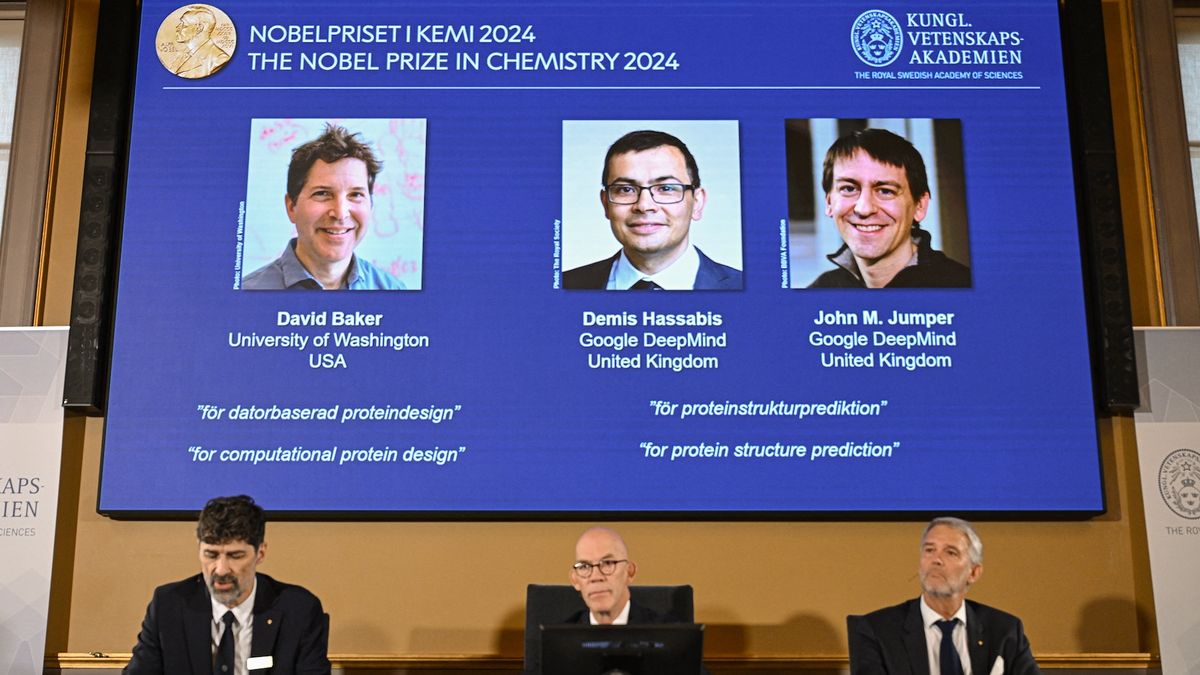The 2024 Nobel Prize in chemistry has been awarded to three scientists who work in two closely intertwined fields of protein science.
David Baker, a professor of biochemistry at the University of Washington, received half of the 11 million Swedish krona ($1.06 million) prize for his work on computational protein design — a tool that enables researchers to design and create completely novel protein structures with properties unlike any found in nature.
The second half of the prize was shared between Demis Hassabis and John Jumper, respectively the CEO and director of Google DeepMind, for their work on protein structure prediction. The AI-powered program AlphaFold2, released in 2021, can predict the three-dimensional structure of any protein from the amino acid sequence encoded in DNA, revolutionizing our understanding of how proteins and molecules in living systems interact with each other.
“Proteins are the molecules which enable life,” Heiner Linke, chair of the Nobel Committee for Chemistry, said during the announcement ceremony in Sweden this morning (Oct. 9).
A protein has tens of thousands of individual atoms, and its specific function is determined by the precise positions of these atoms, with links and folds between the different parts of the molecule creating a unique 3D shape. “To understand how life works, we first need to understand the shape of proteins,” Linke said.
Protein molecules are formed from many individual units called amino acids, which are encoded by three “letter” DNA sequences. It should therefore be possible to predict the 3D structure of a particular protein from this sequence of amino acids. But this problem has been frustrating scientists for decades because there are many possible ways for proteins to fold.
In 2020, Hassabis and Jumper finally cracked this code by developing a program called AlphaFold2, which boosted the accuracy of structure predictions from 40% to 90%. The AI program was trained on a database of protein sequences and protein structures and looks for correlations between the positions of amino acids across thousands of examples. The system then iteratively refines these results down to a single predicted 3D structure.
In the years since it was released, this tool has dramatically improved our understanding of thousands of protein-mediated processes, including antibiotic resistance, and it is now possible to mine these databases for proteins with previously unknown functions, such as plastic-degrading enzymes.
Protein design approaches this same problem from the opposite direction, enabling researchers to visualize the ideal 3D protein structure for a particular function and work backward to calculate the amino acid sequence needed to synthesize it. In 2003, Baker developed a computer program called Rosetta that combines shorter amino acid fragments from an existing database, successively tweaking and optimizing the sequence to match the required 3D shape.
“David Baker opened up a completely new world of protein structures,” Johan Åqvist, a member of the Nobel Committee for Chemistry, said during the announcement. “It’s only your imagination which sets the limit for what you can do here.” Rosetta has since helped to design hundreds of new proteins with diverse applications, ranging from inhibiting the COVID spike protein to acting as biological sensors for opioids in the environment.
Speaking to The Royal Swedish Academy of Sciences Secretary General Hans Ellegren following the prize announcement, Baker said he felt “very excited and very honored” and had been “really deeply inspired by others in the field and people I’ve worked with.”










